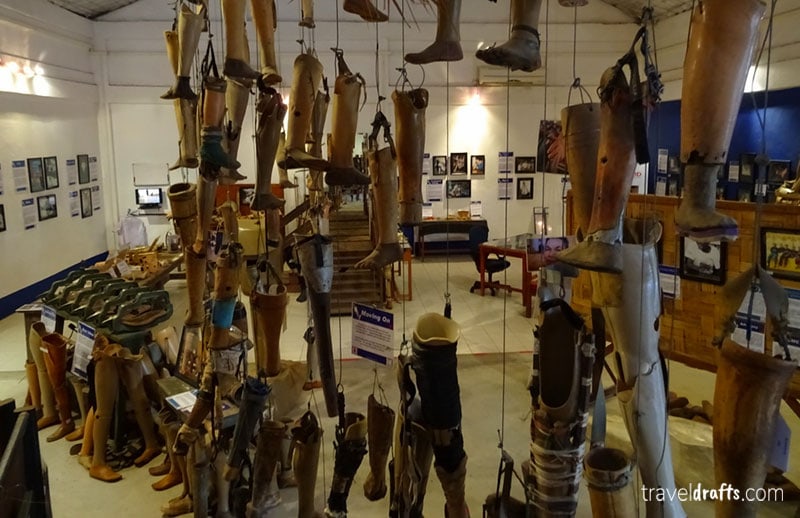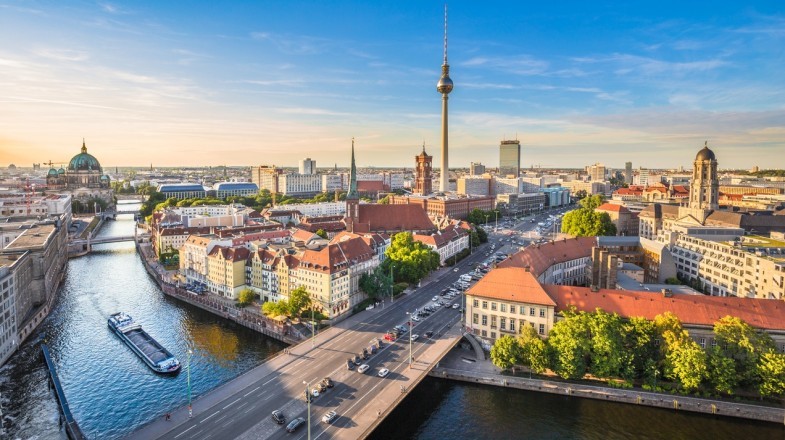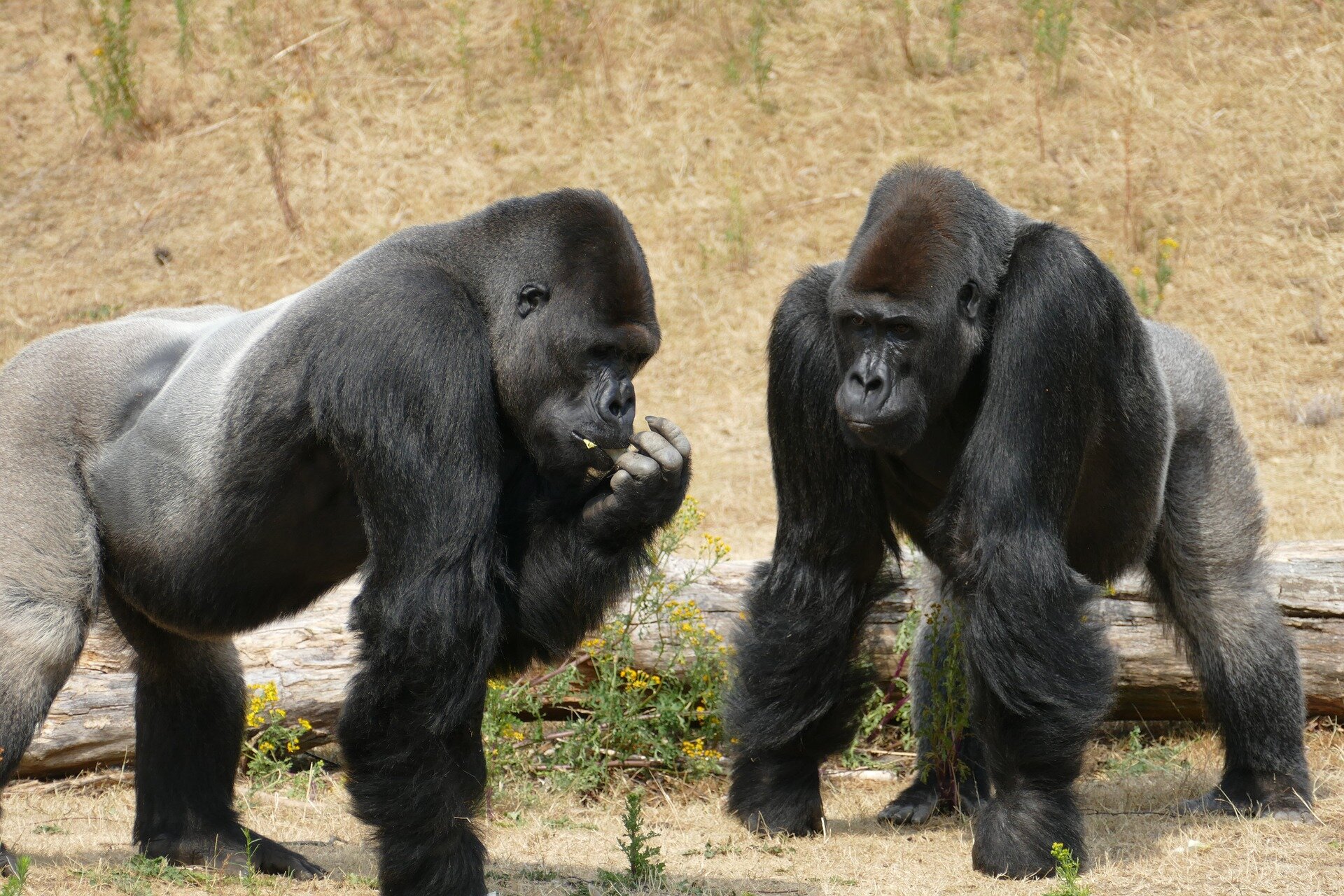#What is Laos famous for?

Table of Contents
Laos is among the least talked about countries and rarely comes up in the news or discussions. So exploring what is Laos famous for is always interesting, as we will find fascinating facts about the country. With a population of almost 8 million people (2023), it is the least populous country in the region.
Located in the center of Indochina, Laos has borders with China and Myanmar (Northwest), Vietnam (East), Cambodia (southeast), and Thailand (west and southwest). As a landlocked country, it is bather by any sea or ocean.
Despite its low-key profile and relatively small size, Laos is a great destination and relatively popular among backpackers. The beautiful nature, the mountains, the culture, the food, and the laid-back attitude attract mostly adventure travelers.
But, without further delays, let’s illustrate what is Laos known for!
Things Laos is famous for
Not being famous
We know this is a bit of a gimmick, but it’s true. Laos is a country that is very under the radar and sometimes completely forgotten.
So, when someone asks what is Laos famous for? Many people won’t be able to give any answer. We would even bet that some haven’t ever heard about Laos or even know it exists.
The reduced media coverage, the reduced population, and the economy are some of the reasons for the lack of attention dedicated to Laos, but the main reason is that the country is closed to the exterior and used to be even more.
Laos has a communist government, and its political environment may influence its reduced visibility and relative lack of recognition. Furthermore, Laos has not invested much in marketing and promoting its tourism offerings to foreign audiences.
Laos might not be as widely popular as its neighbors, but this can be an advantage for some kinds of travelers – particularly those seeking a more authentic, less crowded experience and off-the-beaten-track destination.

Mekong River
The Mekong River is Laos’s most important natural landmark, serving as a border with Thailand in the north and dividing the country to its east and west. It is the most important source of water and waterway in the country.
Naturally, most people in Laos live in the valleys of the Mekong River and its tributaries. The river provides a source of livelihood for Laotians, supplying opportunities for fishing and agriculture. The Mekong is considered the world’s largest inland fishery.
With an estimated length of 4,909 km (3,050 mi), it winds from its headwaters in the Tibetan plateau in China to the South China Sea, crossing southern China, Myanmar, Laos, Thailand, Cambodia, and southern Vietnam. It is the third largest river in Asia and 12th in the world.
When we visited Laos, we had the opportunity to take a slow boat down the Mekong for two days, and it was an amazing experience. It is incredibly slow, and nothing happens, but it is fascinating the see the mountains, the small villages, and, of course, the mighty Mekong.

Luang Prabang
The slow boat we mentioned earlier took us to Luang Prabang, the most popular tourist attraction in Laos. And one of our favorite small towns in South East Asia, offering a mix of both cultural experiences and outdoor adventures.
Located in northern Laos, Luang Prabang is one of the most significant cities in the country, recognized for its stunning natural setting and historic, cultural, and architectural heritage. The vibrant night market with traditional textiles and other handicrafts is also popular among tourists.
The blend of traditional Lao and French colonial styles of architecture earned Luang Prabang a UNESCO World Heritage Site in 1995. But the city is also famous for its Buddhist temples, particularly Wat Xieng Thong.
Situated in the confluence of the Nam Khan River with the Mekong, Luang Prabang is also well-known for its beautiful backdrop and the many natural attractions close by, including lush mountains and beautiful waterfalls (particularly the Kuang Si Falls).

French Heritage
Another thing Laos is known for is that France briefly ruled it, as it constituted part of French Indochina. Although it lasted only 60 years, from 1893 to 1953, it left a significant mark on the country’s architecture, culture, and overall atmosphere.
French Indochina was much larger than Laos, as it included Vietnam and Cambodia. This short colonial period left a profound influence on the three countries. In Laos, it is more evident in Luang Prabang than anywhere else.
There, you will find most of French Architecture, a city layout with wide boulevards and tree-lined streets. But it is also visible in Lao Cuisine, with baguettes and pastry shops, and in the languages, as many Laotians (older generations in particular) still speak a bit of French today.

Secret War
The Secret War also called a shadow war, occurred in Laos during the much more famous Vietnam War. It involved several parties, including the USA, North Vietnam, and the Lao Communist forces. Recently, the details of this war have become much more visible, but at the time, it was conducted in almost secrecy.
This was a clandestine war by design, with much of the fighting and bombing campaigns conducted in secrecy. The main goal was to destroy the communist supply lines between Laos and Vietnam. The US also provided support to anti-communist factions and recruited local fighters.
Despite Laos having declared itself neutral to the Vietnam War, and the government wanted to keep itself out, the strategic location, geographical features, and activities of all the other parties made it impossible.
The Laotian war ended with a victory of communist forces, the Pathet Lao, in 1975, and the country became the Lao People’s Democratic Republic, aligned with the Soviet Union and other communist states.
Bombies
The most crucial factor of the secret war was the bombing campaign. Between 1964 and 1973, the USA dropped more than 2 million tons of bombs on Laos.
To better understand what it is, those are more than the bombs dropped on Germany and Japan combined! This alone made Laos the most heavily bombed country in history, per capita.
The bombings had severe humanitarian and environmental consequences, causing significant global damages, disrupting civil life, and causing many casualties. Of the more than 270 million cluster munitions dropped, it is estimated that about one-third haven’t exploded.
This had an obvious, long-lasting effect on Laos. In particular, the UXO (unexploded ordnance) continues to threaten the population, causing deaths and injuries even today! Efforts to clear the UXO are still ongoing. For example, in 2016, President Obama announced $90 million to help Laos remove the UXO.

Communism
As mentioned above, following the victory of the communist Pathet Laos forces in 1975, Laos became a communist country. It has been renamed the Lao People’s Democratic Republic and has been governed by the LPRP (Lao People’s Revolutionary Party) since then.
Naturally, the Lao government has close ties to many other communist countries, particularly Vietnam and China. The country has adopted socialist policies, and its political and economic systems are according to most communist principles, where the state controls most of the economy, and the Communist party has a central role in society.
Consequently, the LPRP is the only legal party in Laos. It is a centrally planned economy and has implemented policies to collectivize agriculture and other sectors. Although, lately, some reforms are allowing more private initiatives.
Finally, and similarly to other communist countries, Laos has few political freedoms, restricted freedom of the press, and limited civil liberties. Opposition to the ruling party is not tolerated.
Sticky rice
While Lao Food isn’t the most popular or well-known worldwide, it has unique and distinct characteristics. Highly influenced by the cuisine of Thailand, Vietnam, and China, it is unique and flavorful.
Laos’s most popular staple food is Sticky Rice or glutinous rice – Khao Niew. It is mostly a side dish, served with several others. It may be eaten in several ways but is usually eaten by hand, rolled into small balls, and dipped into sauces.
Glutinous rice is round-grained rice that doesn’t have (or has very little) starch amylose. This makes it have a sticky, almost glue-like texture when cooked. It may be used in sweet and savory dishes and is most often steamed.
Laos has the highest consumption per capita worldwide, with an average of 171 kilograms of sticky rice per person. Sticky rice is important and is ingrained in the country’s culture, religious traditions, and even National identity. It is said that the sticky rice is the glue that holds together the Lao communities, even abroad.
The Lao even call themselves luk khao niaow, which loosely translates to “the children of sticky rice.”

Elephants
Another thing Laos is known for is Elephants. The Asian elephant (Elephas maximus) can be found in Laos, and it has played a relevant role historically, culturally, and economically. They were used for work, carrying goods, and in religious and cultural ceremonies. They were also symbols of power and prestige.
Between 1353 and 1707, a large area of present-day Laos was a kingdom called Lan Xang, which roughly translates to “the land of the million elephants.” This old kingdom is the basis for Laos’s national historic and cultural identity.
During this time, the country was known to be the home of many elephants roaming free. However, there are no estimates about how many. In the last two centuries, the number of elephants decreased significantly due to poaching, habitat loss, and changes in land use.
Recent statistics estimate that about only 1000 elephants remain in the wild, with about 500 more in captivity. Yet, the historical significance of elephants in Lao culture is still recognized even though the literal abundance of elephants is no longer accurate.
Conservation and protection efforts have been made in recent years, including elephant sanctuaries and ethical tourism around these beautiful animals. However, the number of these beautiful creatures in the wild is still decreasing.

Buddhism
Laos is also known for its Buddhist heritage, with Buddhism playing a significant role in the culture, traditions, and daily life of the Lao people.
Monks and temples are integral parts of Lao society. They are respected and even revered in Laos, with young men spending time with monks to gain education and merit. Monastic life is characterized by meditation, prayer, study, and community service.
Many monks participate in the almsgiving ritual, where they walk through the town receiving offerings from the local community and tourists. This is a very popular thing to experience in Laos, particularly in Luang Prabang.
Naturally, Laos has a rich collection of significant Buddhist temples, some absolutely beautiful and adorned with intricate carvings and colorful murals. The most famous are Pha That Luang in Vientiane – a World Heritage Site – and Wat Xieng Thong, Wat Mai, and Wat Wisunarat – all three in Luang Prabang and part of its UNESCO heritage listing.

If you liked the article, do not forget to share it with your friends. Follow us on Google News too, click on the star and choose us from your favorites.
For forums sites go to Forum.BuradaBiliyorum.Com
If you want to read more Like this articles, you can visit our Trip & Travel category.




